Table of Contents
The geography of Philippines is a captivating blend of diverse landscapes and historical significance. Situated in Southeast Asia, this archipelago’s geographic location has played a pivotal role in shaping its history and cultural identity.
Nestled in the western Pacific Ocean, the Philippines geography beckons adventurous travelers with its pristine beaches, towering mountain ranges, and fertile rice terraces. From exploring the majestic peaks of the Cordillera to uncovering the cultural tapestry of Manila, the Philippines’ diverse landscapes and rich history offer an unforgettable journey for intrepid tourists seeking a unique and enriching experience.
The Philippines physical geography paints a picture of awe-inspiring natural masterpieces. From the breathtaking Chocolate Hills of Bohol, representing the nation’s unique karst formations, to the diverse ecosystems that span from the tropical rainforests to the stunning coral reefs, the Philippines stands as a testament to nature’s grandeur.
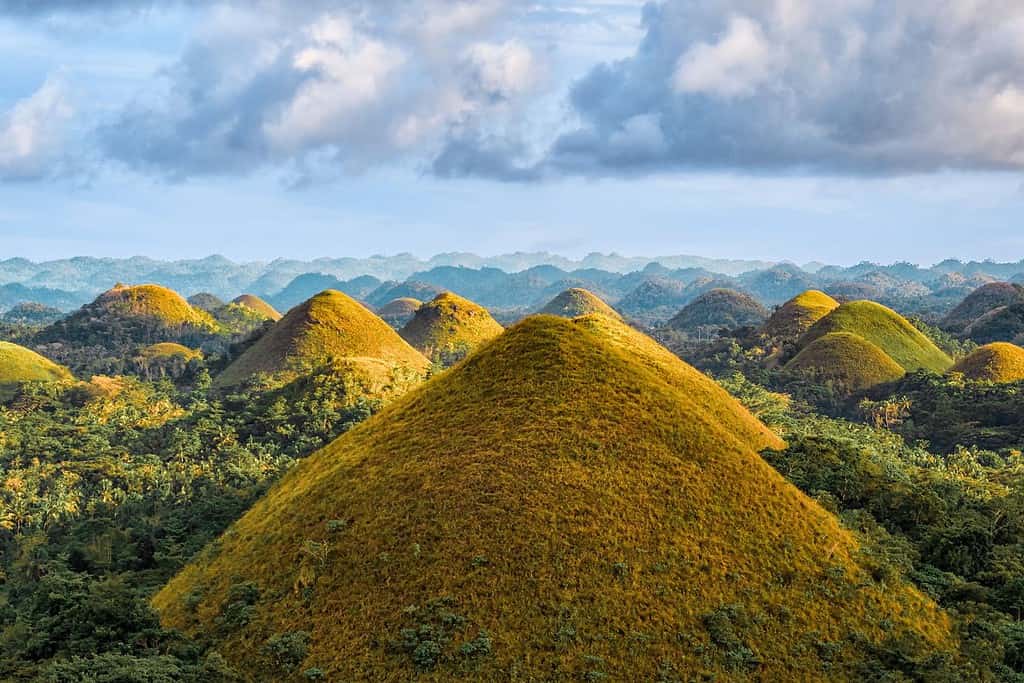
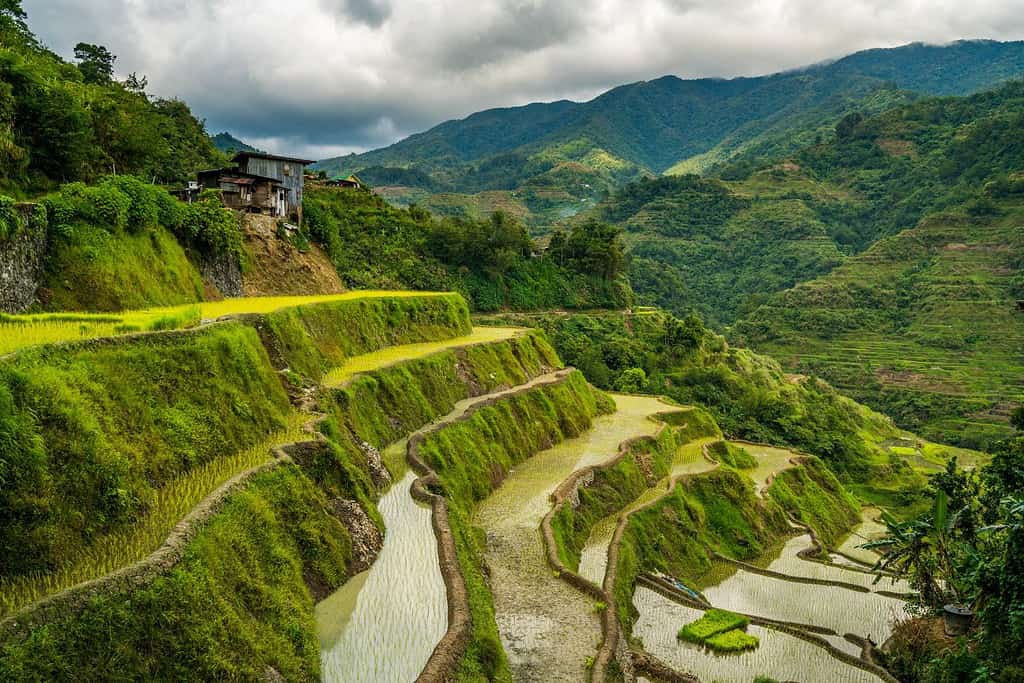
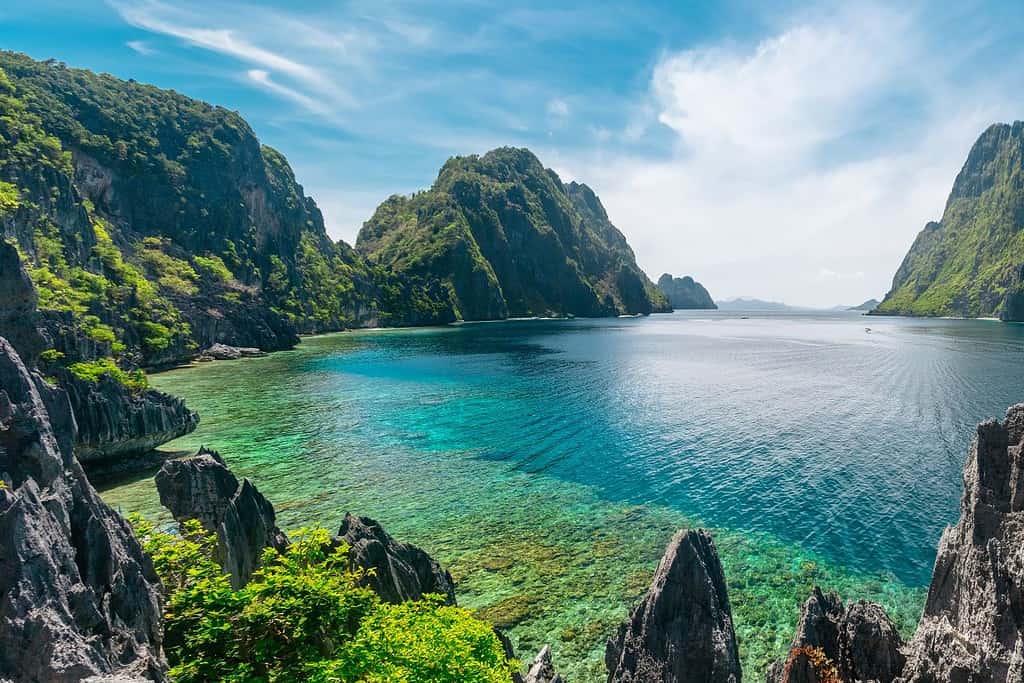
Top Geographic Features of the Philippines
- Philippine Cordillera: A mountain range in the northern part of Luzon, this range plays a significant role in influencing the region’s topography and climate. It is home to the famous Banaue Rice Terraces.
- Pasig River: One of the Philippines’ most known rivers, the Pasig River flows through Manila and serves as an essential waterway, historically connecting trade and commerce.
- Bicol Peninsula: Located in the southeastern part of Luzon, this region is known for its volcanic landscapes, particularly the iconic Mayon Volcano known for its near-perfect cone shape.
- Visayan Islands: Comprising major islands like Cebu, Bohol, and Leyte, this central region is characterized by its beautiful beaches, unique culture, and significant historical sites.
- Chocolate Hills: Located in Bohol, these renowned cone-shaped hills are a popular tourist attraction, showcasing a unique geological formation.
- Mindanao Plateau: Situated in the southern part of the Philippines, this plateau is known for its lush forests, fertile lands, and diverse ecosystems.
- Cagayan River: The longest river in the Philippines, the Cagayan River flows through northern Luzon and plays a vital role in agriculture and irrigation.
- Tubbataha Reefs Natural Park: A UNESCO World Heritage Site located in the Sulu Sea, it is home to some of the world’s most diverse marine life, including various species of fish, sharks, and corals.
- Palawan Island: Known as the “Last Frontier” of the Philippines, this island boasts pristine beaches, limestone cliffs, and the famous Underground River.
- Siargao Island: Located to the east of Mindanao, Siargao is renowned for its surfing spots and unique teardrop shape.
These geographic features play a vital role in shaping the Philippines’ landscape, climate, and cultural history, making them fundamental elements in defining the country’s geography.
Philippines Geography
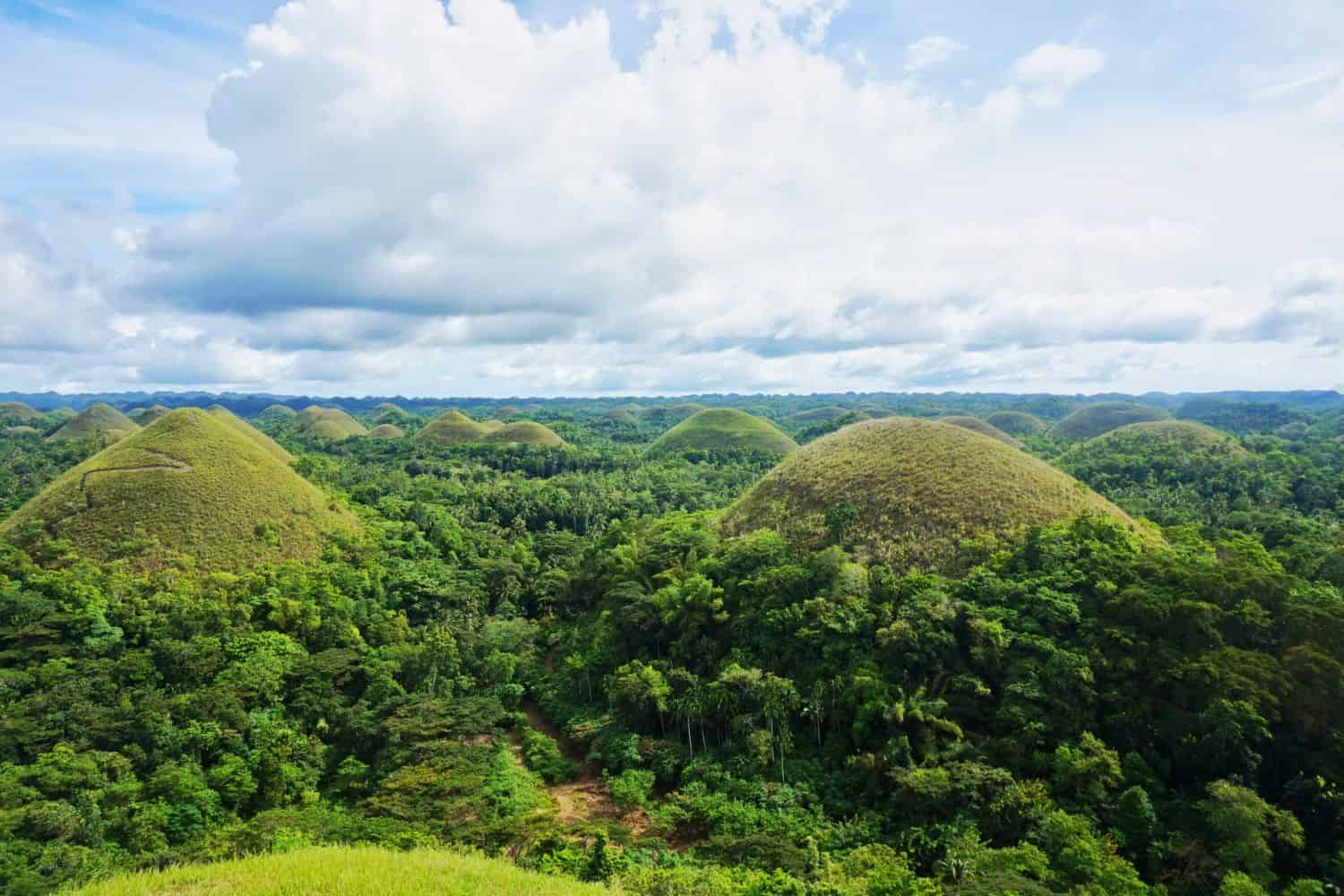
Exploring the Philippines National Geographic canvas reveals a mesmerizing array of geographic features. From the spectacular Sierra Madre mountains to the vast Central Plains and the lush coconut groves of Quezon, the country presents an enchanting tapestry of natural wonders.
- Mountain Ranges – The Crown of Diversity: Just as documentaries frequently showcase towering mountain ranges, the Philippines prides itself on the Sierra Madre range. These dramatic peaks not only contribute to the nation’s scenic allure but also foster unique biodiversity and mold its cultural fabric.
- Islands and Beaches – A Mosaic of Beauty: The Philippines’ Palawan archipelago, with its pristine beaches and turquoise waters, embodies the postcard-perfect landscapes captured in photographs. These crystal-clear waters, surrounded by diverse marine life and limestone cliffs, signify the country’s rich marine biodiversity.
- Plains – Fertile Grounds of Prosperity: As documentaries often emphasize vast landscapes, the Philippines’ Central Plains exhibit expansive agricultural lands that nourish a multitude of communities. This productive region shares tales of farmers’ traditions and the nation’s agrarian strength.
- Historical Sites – Relics of Bygone Eras: Philippines’ historical sites, like the ancient rice terraces of Ifugao, evoke memories of journeys that unveil age-old cultures. These vestiges serve as evidence of the country’s deep indigenous roots.
- Ethnic Diversity – A Melange of Cultures: In line with National Geographic’s focus on diverse societies, the Philippines is a blend of ethnic groups, including Tagalog, Cebuano, and indigenous tribes. Each group brings forward unique traditions, languages, and practices, weaving a lively cultural tapestry.
- Wildlife – An Ark of Biodiversity: The Philippines’ protected zones, such as the Tubbataha Reefs Natural Park, parallel the dedication to wildlife conservation. These areas provide indispensable sanctuaries for myriad species, upholding biodiversity in varied settings.
- Geological Marvels – Nature’s Spectacle: The nation’s geological wonders, like the Chocolate Hills of Bohol, highlight the Philippines’ natural beauty amidst its archipelago setting. These formations represent the dynamic interplay of nature’s elements.
- Remote Exploration – Islands of Mystery: The secluded islands of Batanes beckon travelers, much like calls to unexplored realms. This remote stretch offers a view of pristine landscapes and distinctive ecosystems.
The Philippines geographic features are dominated by its island archipelago nature, offering a plethora of beaches, mountains, and unique landscapes. The historic trade routes that weave through the islands have connected various Asian regions, fostering trade and cultural exchange.
Flowing gracefully through the Philippine landscape are the life-sustaining rivers like Cagayan and Agusan, imperative for agriculture and livelihood. Furthermore, the vast Central Plains and the rainforests of Mindanao add depth to the nation’s distinct geography.
Philippines Geographic Location
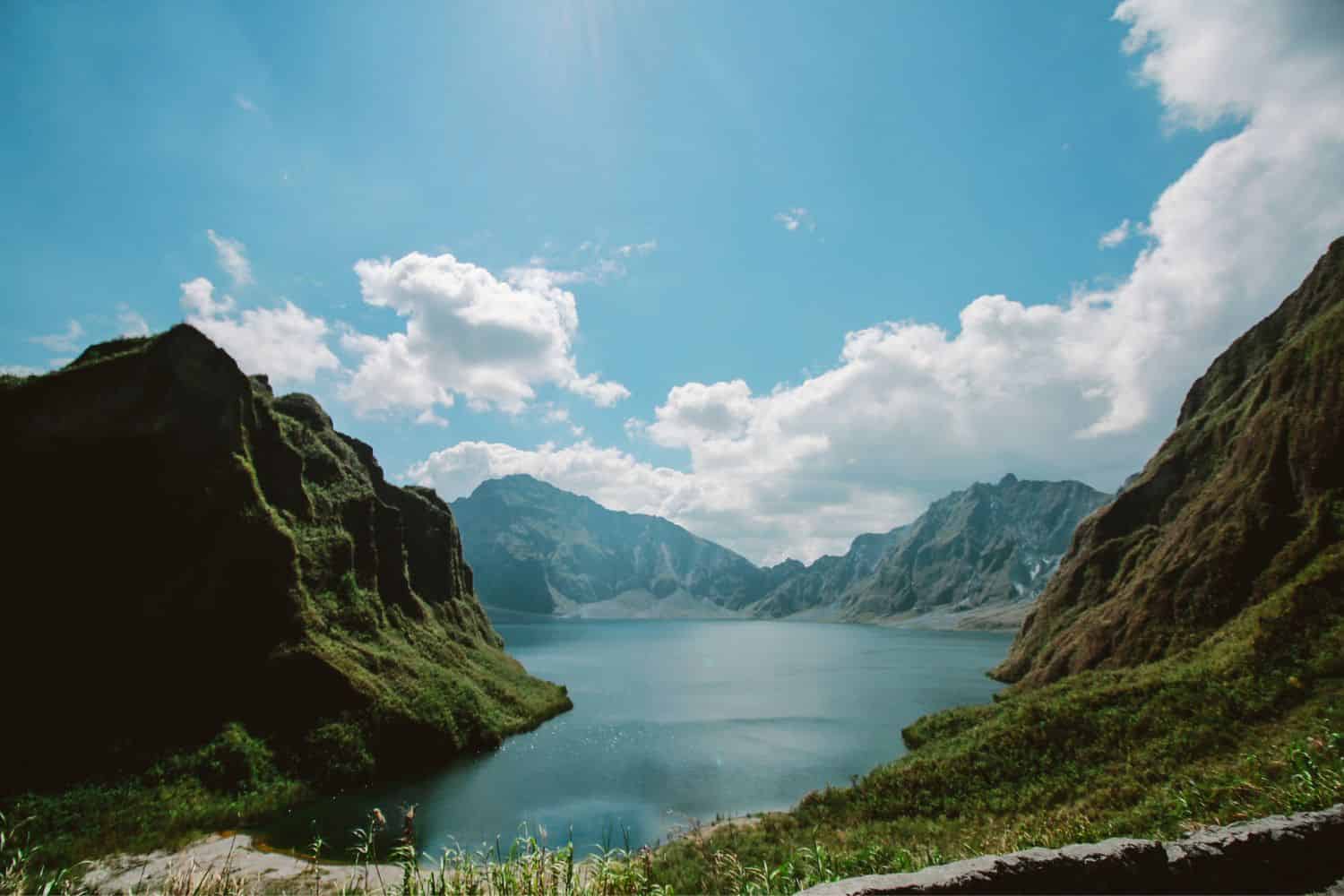
The Philippines geographic location is very strategic, and its position has played a significant role throughout history. Located in Southeast Asia, the country consists of over 7,000 islands and has been a nexus for trade, culture, and ideas, emphasizing its historical importance.
Borders of the Philippines
The Philippines is an archipelago and does not share land borders with any countries.
Geography of Manila Philippines
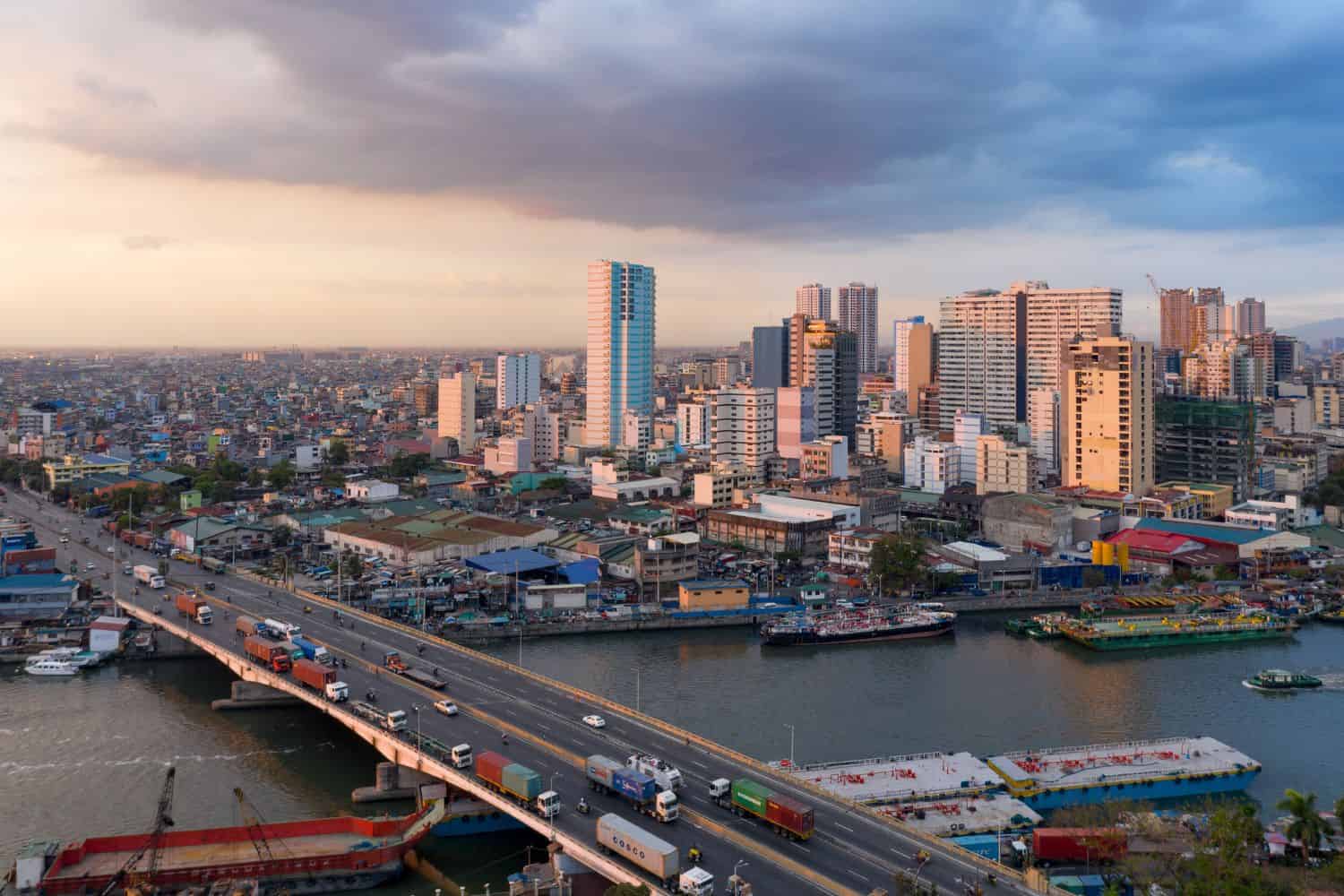
As the capital city of the Philippines, Manila is a captivating microcosm of the country’s human geography. Here, various ethnic groups, including Tagalogs, Visayans, Ilocanos, and Chinese, coexist, contributing to the city’s vibrant cultural tapestry.
Manila, the capital city of the Philippines
- City of Contrasts: Manila is known for its stark contrasts, where modern skyscrapers coexist with traditional districts, creating a unique blend of old and new.
- Manila Bay: Manila Bay borders the city, playing a significant role in its trade and transportation.
- Manila’s Elevation: The city is located near sea level, with the vast Central Luzon plains stretching out around it.
- Green Spaces: Manila is home to several beautiful parks and gardens, including the Rizal Park, offering a serene escape amidst the bustling city.
- Manila’s Historical Significance: With a history deeply rooted in colonial times, particularly under Spanish rule, Manila has witnessed various epochs and played a pivotal role in Asian politics and trade.
- Diverse Architecture: The city showcases a diverse architectural heritage, reflecting influences from Spanish, American, and modern styles.
- Karaoke Culture: Manila, and the Philippines in general, is renowned for its love of karaoke, and this music culture can be seen and heard throughout the city.
- Malacañang Palace: The historic Malacañang Palace, located in the heart of the city, is an iconic symbol of the Philippines’ political history.
- Manila’s Economy: The city serves as the Philippines’ economic and cultural hub, attracting people from all over the archipelago seeking opportunities and education.
- Population Growth: Manila has experienced steady population growth, with a significant influx of migrants from various provinces, leading to urbanization and infrastructure challenges.
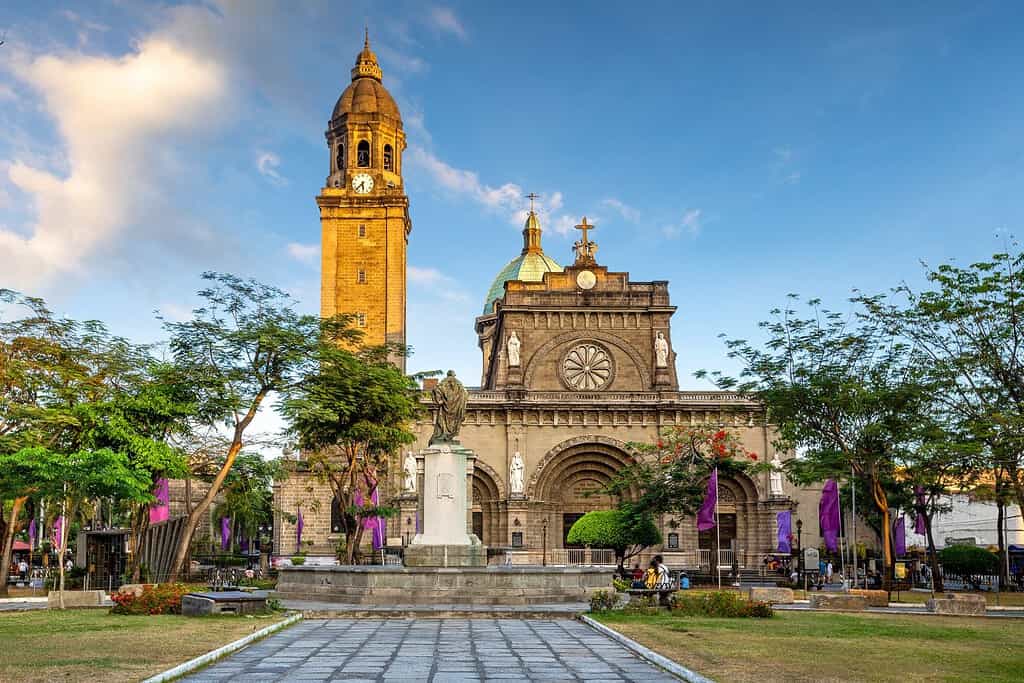

Historical Geographical Importance of the Philippines
Throughout the ages, the geographical importance of Philippines has made it a focal point for historical events. As empires and nations ebbed and flowed, from the Spanish to indigenous kingdoms and American colonizers, the geographical position of Philippines played a pivotal role in shaping the world’s history.
- Strategic Archipelago: The Philippines location as an archipelago between the vast expanse of the Pacific Ocean and Southeast Asia has made it a strategic hub for trade, cultural exchange, and military endeavors throughout history.
- Ancient Trade Routes: Indigenous trade routes passed through the Philippine islands, connecting various tribes and facilitating the exchange of goods, ideas, and cultures.
- Spanish Colonization: The Philippines was a pivotal territory during Spanish colonization in the 16th century as they sought to extend their influence in Asia.
- Wars of Independence: During the late 19th and early 20th centuries, the Philippines became a hotbed of revolutionary movements, with heroes like José Rizal and Andres Bonifacio rallying against Spanish and later American rule.
- American Period: The Philippines’ strategic position led to its colonization by the United States in the early 20th century, influencing its culture, education, and governance.
- Influence of Indigenous Kingdoms: The Philippines was home to various indigenous kingdoms and societies, such as the T’boli, Ifugao, and Maranao, influencing its early history and culture.
- Conquests of the Spanish and Americans: The European and American influences of the 16th to 20th centuries had a profound impact on the Philippines’ history, leading to a blend of cultures and traditions.
- Pearl of the Orient: The Philippines, often referred to as the “Pearl of the Orient Seas,” with its rich biodiversity and natural wonders, has been a symbol of its cultural and historical identity.
- Influence of Folk Dance and Music: The Philippines, with its diverse cultural mix, has given birth to various forms of folk dances and music, like the Tinikling and Kundiman, reflecting its unique cultural heritage and influencing its art and architecture.
The geographical position of the Philippines is a vibrant mosaic of natural beauty and historical significance. With its sprawling archipelago of over 7,000 islands, crystal-clear waters, and rich cultural diversity, this maritime nation captivates the hearts of travelers and explorers alike. From its lush mountain ranges to its pristine beaches, the Philippines offers a myriad of experiences, blending natural wonders with historical depth.
In conclusion, the Philippines’ geographical location has played a crucial role in shaping its history and identity. As a vital crossroads for maritime trade and cultural exchanges, it has been influenced by a multitude of civilizations, from native kingdoms to colonial powers. This strategic position has not only left an indelible imprint on the nation’s history but continues to be a significant factor in the dynamics of regional and global geopolitics.
More About Philippines
[the-post-grid id=”50412″ title=”Philippines Main page”]
